
B2B SaaS Conversion Benchmarks: And How To Improve Yours

by
Wiktoria Slowikowska
Sep 11, 2024
Identify and convert your most valuable users
Sign Up
Understanding conversion rates in B2B SaaS is crucial for turning potential customers into actual buyers. These rates help you figure out how well your business is doing at attracting and keeping clients.
This guide explores key aspects of B2B SaaS conversion rates, including what they mean, how to improve them, and the role of Product-Led Growth (PLG) in this process.
Key Takeaways
Conversion rates are essential for measuring how well you attract and keep customers.
B2B SaaS companies should track various metrics to understand their performance better.
Product-Led Growth strategies can significantly enhance conversion rates.
Free trials are popular, but understanding their effectiveness is key to converting users.
Monitoring user behavior and refining onboarding processes are vital for improving activation rates.
Understanding B2B PLG SaaS Conversion Rates
Importance of Conversion Rates
Conversion rates are crucial for B2B SaaS businesses. They show how well you turn visitors into leads and paying customers. These rates help you understand your marketing and sales effectiveness. Knowing your conversion rates can guide you in making better decisions to grow your business.
Industry Benchmarks
Understanding industry benchmarks is essential. For instance:
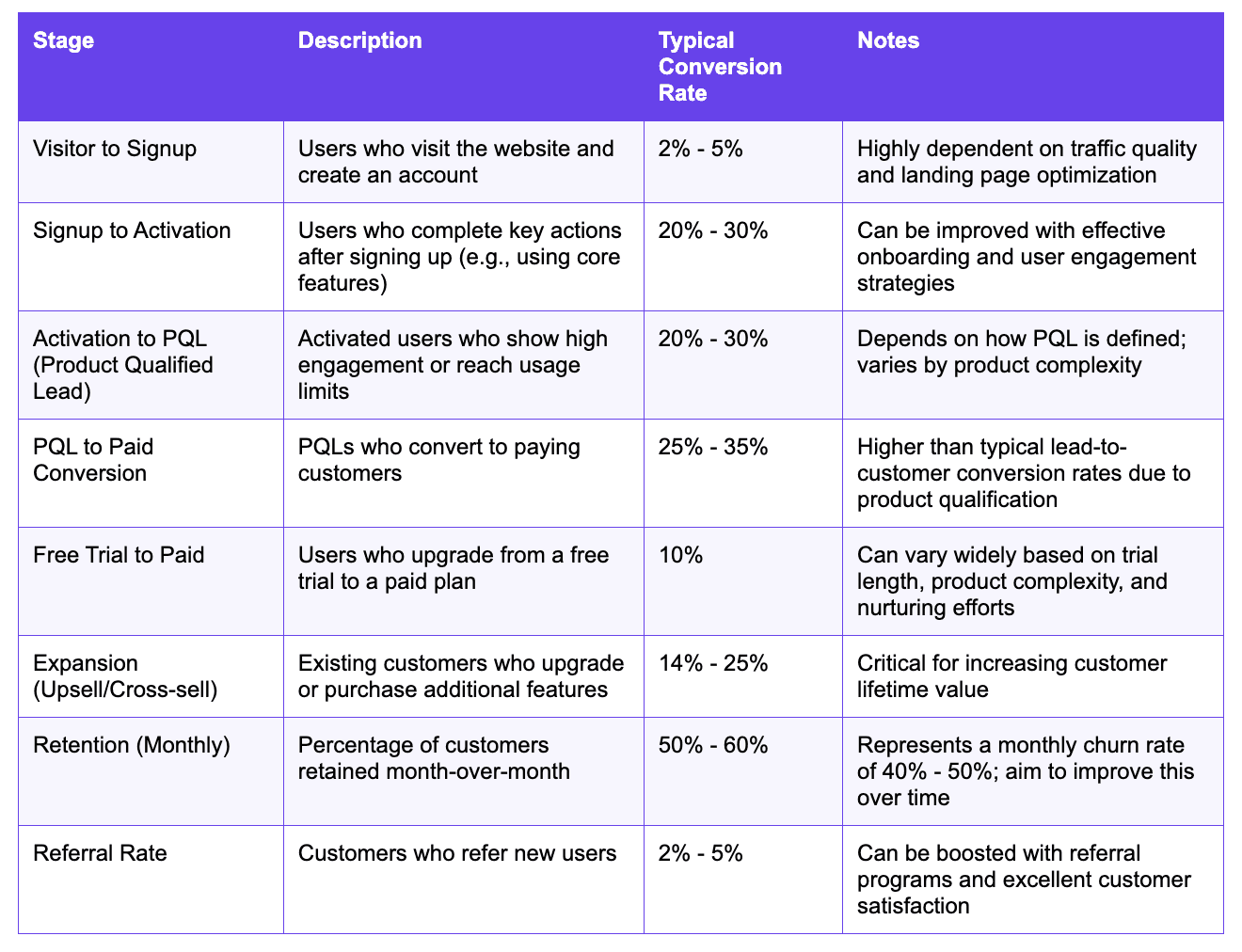
Knowing these benchmarks helps you set realistic goals and measure your success against others in the industry.
Understanding conversion rates is just one part of the bigger picture. You should also consider other metrics like customer lifetime value and retention rates to get a full view of your business's health.
Stages of the B2B SaaS Conversion Funnel
Awareness and Acquisition
The first stage of the conversion funnel is awareness. This is where potential customers learn about your product. It's crucial to raise interest and build trust. Effective strategies include:
Social media engagement
Paid advertising
Activation and Retention
Once users are aware of your product, the next step is activation. This means getting users to try your product, often through free trials. Retention is equally important; keeping users engaged ensures they continue using your product. Here are some tips:
Provide a seamless onboarding experience.
Offer in-app support.
Regularly update users with new features.
Revenue and Referral
The final stages focus on revenue and referral. After users convert to paying customers, encourage them to refer others. This can be achieved through:
Incentives for sharing
Excellent customer service
Understanding these stages helps you identify where to improve your conversion rates. By focusing on each step, you can create a more effective sales funnel and drive better results.

Optimizing Free Trial to Paid Conversion Rates
Types of Free Trials
There are different types of free trials that can impact your conversion rates:
Opt-in Free Trial: No credit card is needed. Users must choose to continue after the trial.
Opt-out Free Trial: Requires a credit card. Users are charged unless they cancel.
Unlimited Free Trial: Users can access all features.
Limited Free Trial: Users have access to only some features.
Best Practices for Free Trials
To improve your free trial conversion rates, consider these tips:
Understand your SaaS free trial conversion rates: Track how many trial users become paying customers.
Engage users early: Use onboarding tools to help users see the value of your product quickly.
Collect feedback: Use microsurveys to understand why users may not convert.
Common Challenges and Solutions
Here are some challenges you might face and how to tackle them:
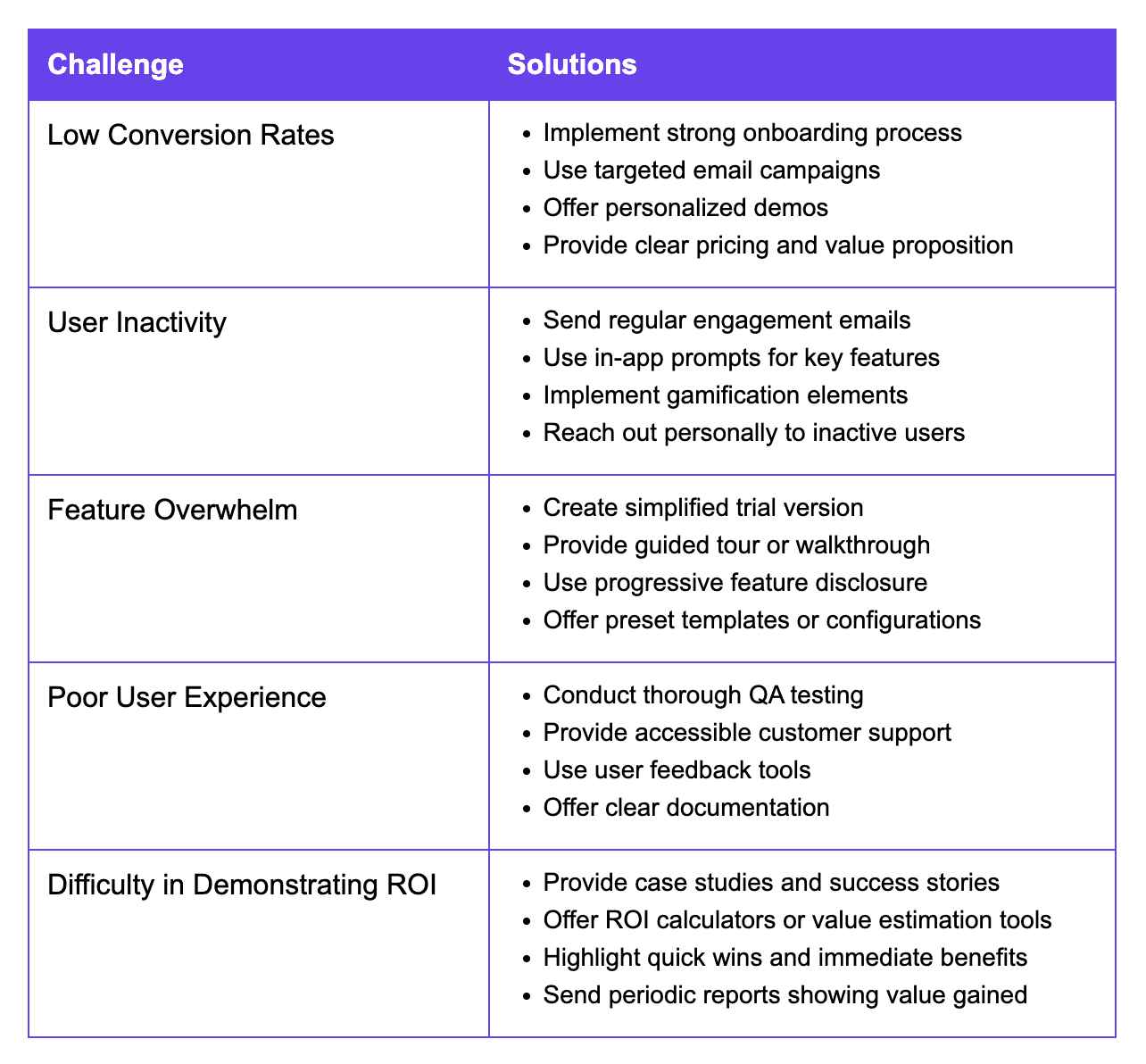
Remember: The goal is to turn potential customers into paying users. By focusing on user experience and engagement, you can significantly boost your conversion rates.
Role of Product-Led Growth in Conversion Optimization
Defining Product-Led Growth
Product-Led Growth (PLG) is a strategy where the product itself drives customer acquisition, conversion, and retention. This model allows users to experience the product before making a purchase, which can lead to higher conversion rates.
PLG Strategies for SaaS Companies
To effectively implement PLG, companies can adopt several strategies:
Freemium Model: Offer a basic version of the product for free, encouraging users to upgrade for more features.
Free Trials: Allow users to try the full product for a limited time, increasing the chances of conversion.
User Feedback: Collect insights from users to improve the product and enhance user experience.
Metrics Beyond Conversion Rates
Customer Acquisition Cost (CAC)
Understanding your Customer Acquisition Cost (CAC) is crucial. This metric shows how much you spend to gain a new customer. To calculate CAC:
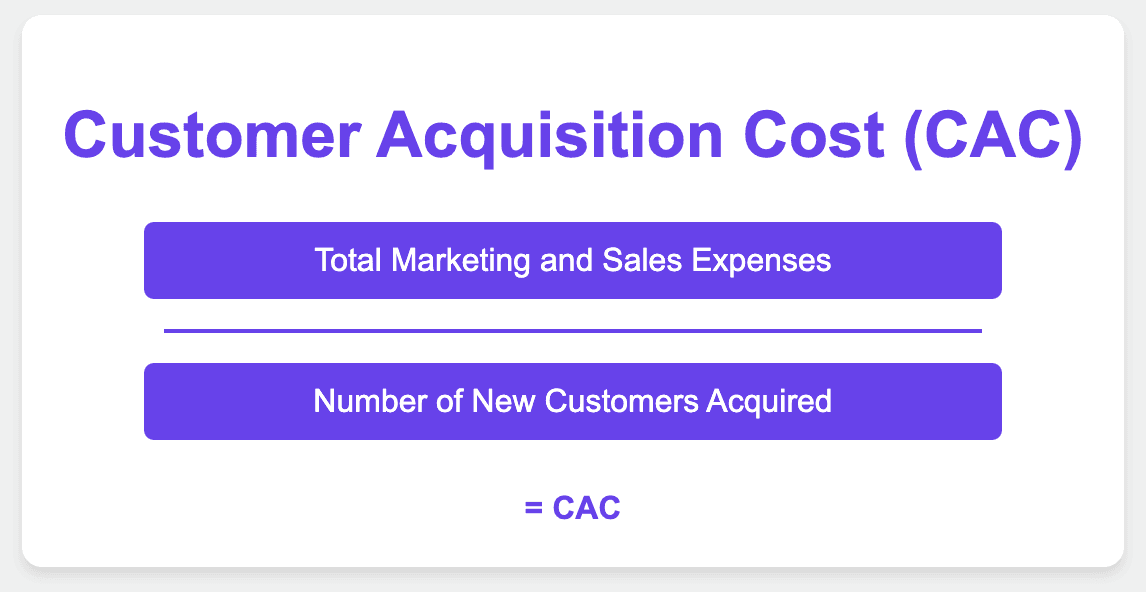
Keeping CAC low while increasing the number of customers is key to profitability.
Customer Lifetime Value (LTV)
Customer Lifetime Value (LTV) measures how much revenue a customer will generate during their time with your business. To calculate LTV:
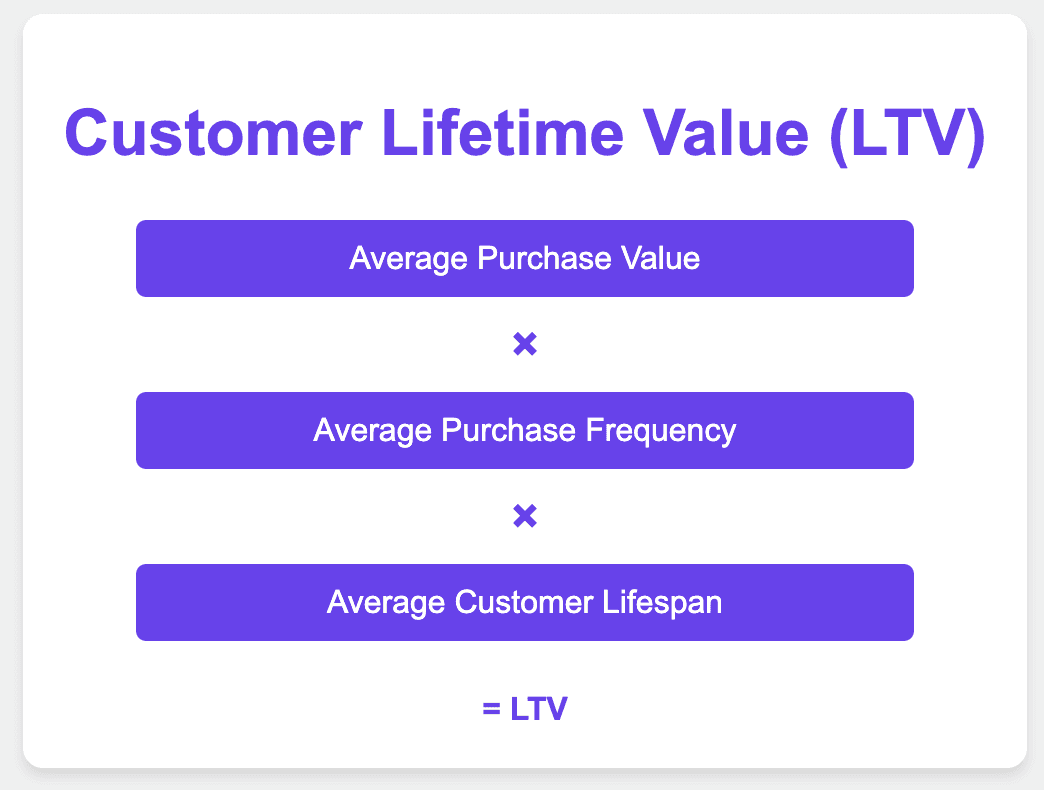
A higher LTV means you can spend more on acquiring customers.
Churn Rate and Retention
Churn rate indicates the percentage of customers who stop using your service over a specific period. To calculate churn rate:

A high churn rate can signal problems with your product or service. Improving retention is essential for long-term success.
Understanding these metrics helps you see the bigger picture. They show how well your business is doing beyond just conversion rates.
Improving User Onboarding and Activation
Effective Onboarding Practices
To enhance user onboarding, it's crucial to create a personalized welcome experience. This can include a welcome screen that captures user information and preferences. By segmenting users based on their responses, you can tailor the onboarding process to meet their specific needs.
Measuring Activation Rates
Tracking activation rates is essential. This metric shows how many users take meaningful actions after signing up. A good activation rate indicates that users are finding value in your product. You can improve this by using interactive walkthroughs that guide users through key features, helping them reach their activation point faster.
Tools and Resources for Onboarding
Utilizing tools like Hyperaktiv, Userpilot or Encharge can significantly improve your onboarding process. Here are some effective strategies:
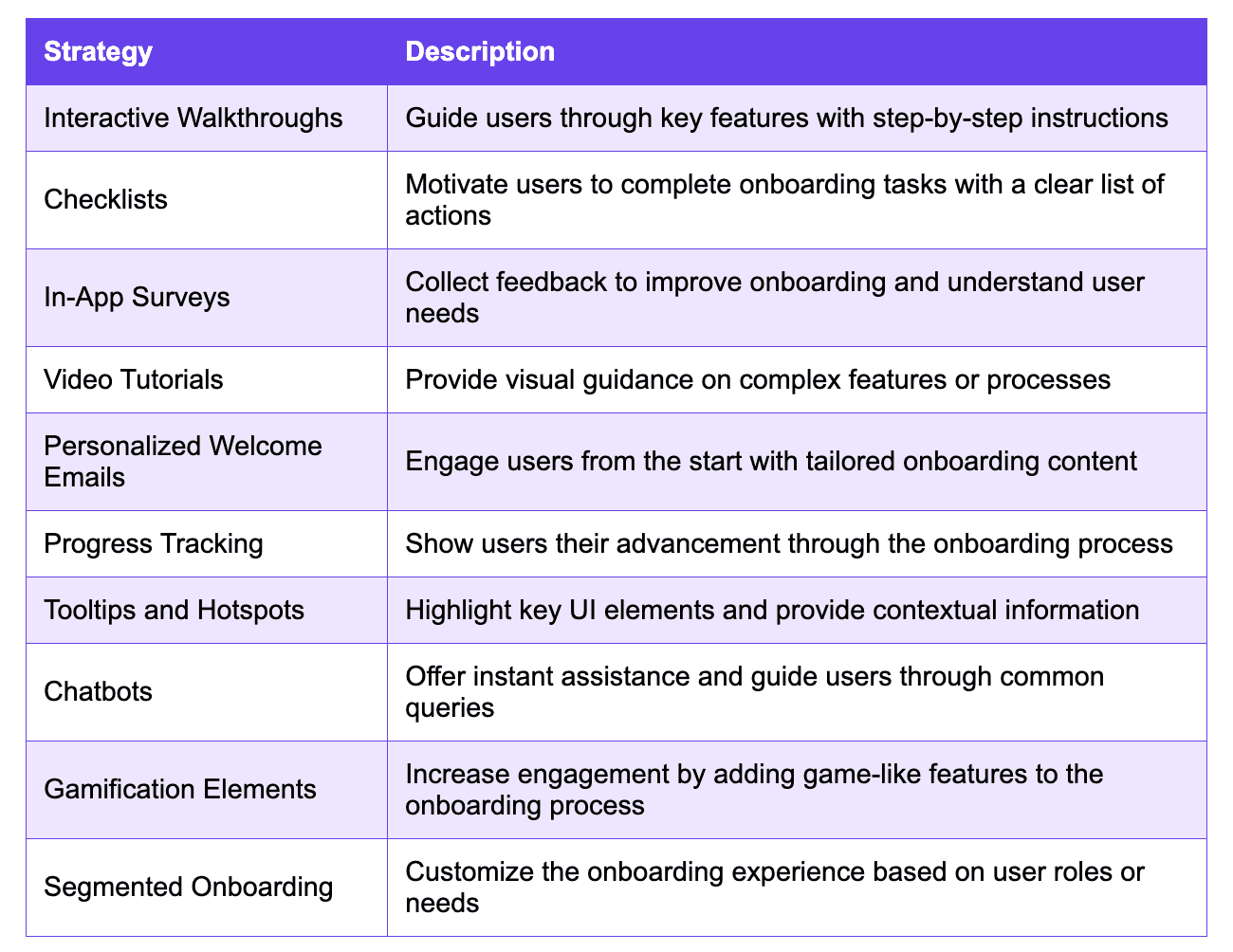
Improving user onboarding is not a one-time task; it requires continuous testing and adjustments to meet user needs effectively.
Impact of Marketing Channels on Conversion Rates
Understanding how different marketing channels affect conversion rates is crucial for B2B SaaS companies. The right channel can significantly boost your conversion rates. Here's a breakdown of how various channels perform:
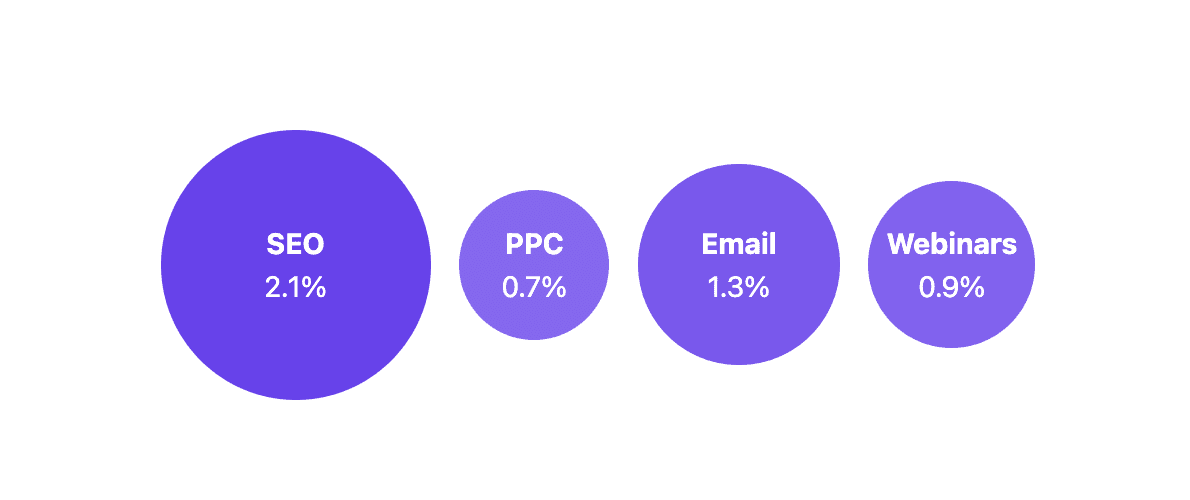
Leveraging Data to Enhance Conversion Rates
Tracking and Analyzing User Behavior
To improve conversion rates, it's essential to track user behavior. This involves monitoring how users interact with your product. Here are some key actions to consider:
Identify user paths: Understand the common routes users take within your app.
Analyze drop-off points: Find where users lose interest or abandon tasks.
Segment users: Group users based on their behavior to tailor experiences.
A/B Testing and Experimentation
A/B testing is a powerful method to enhance conversion rates. By comparing two versions of a webpage or feature, you can determine which one performs better. Here's how to implement it:
Choose a variable: Decide what you want to test (e.g., button color, headline).
Create two versions: Develop version A and version B.
Run the test: Show each version to a portion of your users.
Analyze results: Determine which version had a higher conversion rate.
Using Analytics Tools Effectively
Utilizing analytics tools can provide insights into your conversion rates. Here are some popular tools:
1. Google Analytics
Web analytics service that tracks and reports website traffic. It provides insights into user behavior, traffic sources.
2. Hyperaktiv
A growth tool that tracks user engagement and behavior for PLG SaaS. It provides valuable insights into user journeys ultimately enhancing conversions.
3. Hotjar
Offers visual representations of user behavior through heatmaps, session recordings, and user feedback tools. It helps in identifying usability issues and optimizing user experience.
Understanding how to leverage data is crucial for harnessing the power of data in product-led growth strategies. By focusing on user behavior and testing, you can drive conversions effectively.
Conclusion
In summary, understanding B2B SaaS conversion benchmarks is key to improving your business and staying ahead. By keeping track of the various stages in your sales funnel and comparing your results to industry standards, you can spot areas that need improvement.
Frequently Asked Questions
What are conversion rates in B2B SaaS? Conversion rates show how well your business turns visitors into customers. It's important to track these rates to see how effective your marketing is.
Why should I care about conversion rates? Monitoring conversion rates helps you understand how well your business is doing. It can highlight areas that need improvement so you can stay competitive.
What is a good conversion rate for B2B SaaS? A good conversion rate can vary, but aiming for around 5% for website visitors and 37.5% for activation is a solid target.
How can I improve my free trial conversion rate? You can boost your free trial conversion rate by focusing on user experience, providing clear onboarding, and using Product-Led Growth (PLG) strategies.
What is the average conversion rate for free trials? For B2B companies, the average conversion rate from free trials to paid accounts is usually 10%.
What metrics should I track beyond conversion rates? Besides conversion rates, you should keep an eye on customer acquisition cost, customer lifetime value, and churn rate to get a full picture of your business's health.
What is a typical website conversion rate for B2B SaaS? While it varies by industry, a good target for website visitor to lead conversion rate is around 5%.




